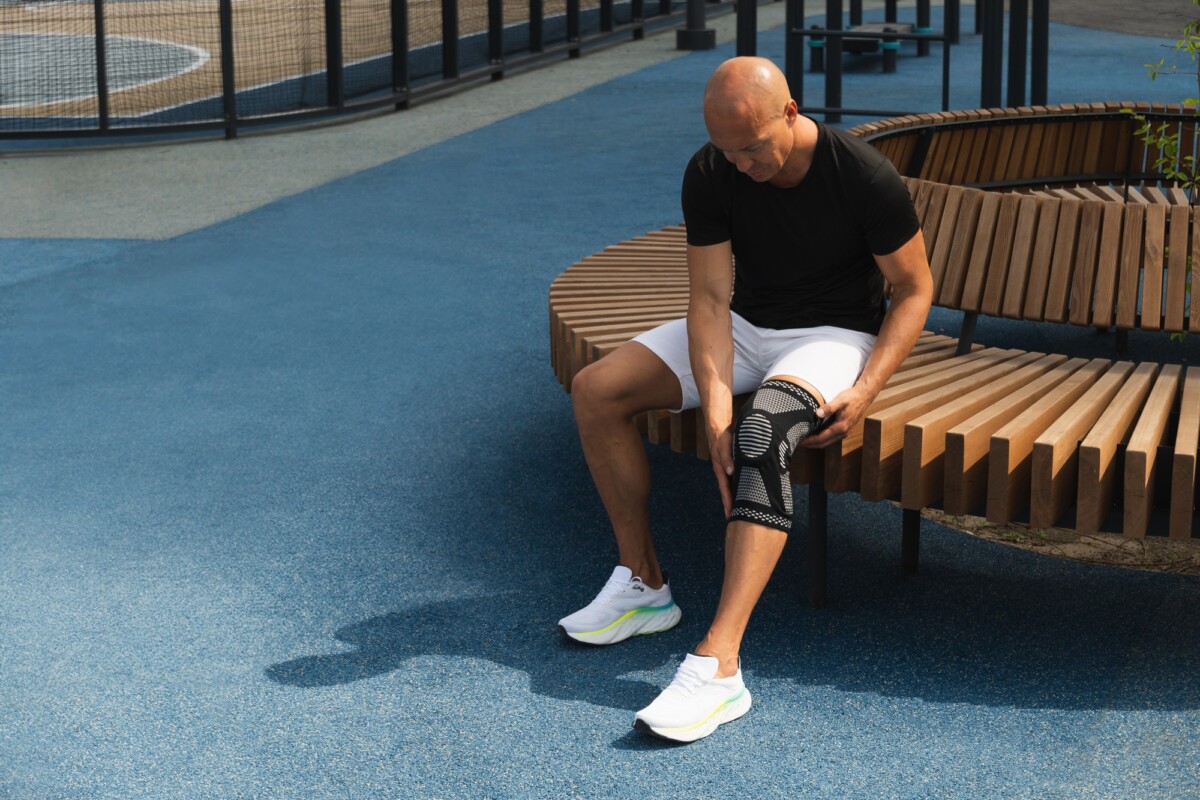Knee Braces for Osteoarthritis: A Simple Solution for Joint Support
[tta_listen_btn]
Osteoarthritis (OA) is the most common form of arthritis, affecting millions of people worldwide—especially those over 45. One of the most commonly impacted joints is the knee, leading to chronic pain, stiffness, reduced mobility, and a significant drop in quality of life. While various treatment options are available, knee braces for osteoarthritis have emerged as a non-invasive, cost-effective, and increasingly advanced solution in 2025.
This comprehensive guide explores everything you need to know about knee braces for osteoarthritis—how they work, their benefits, the best options available in 2025, the latest technological advancements, and how they fit into a broader treatment strategy.
What Is Osteoarthritis of the Knee?
Osteoarthritis of the knee is a degenerative joint disease caused by the gradual breakdown of cartilage. This cartilage acts as a cushion between the bones, and when it wears down, bones begin to rub together, leading to pain, inflammation, and stiffness. Over time, the joint structure may deteriorate further, causing bone spurs and decreased mobility.
Common symptoms include:
-
Persistent knee pain
-
Swelling and stiffness
-
Cracking or popping sounds
-
Limited range of motion
-
Difficulty walking or standing for long periods
Risk Factors
-
Age (typically over 45)
-
Obesity
-
Previous knee injuries
-
Genetics
-
Sedentary lifestyle
How Knee Braces Help with Osteoarthritis
Knee braces for osteoarthritis are designed to reduce pain, improve stability, and increase mobility. They do so primarily by redistributing pressure, reducing bone-on-bone contact, and offering support to weakened muscles and ligaments.
Key Functions of Knee Braces
-
Unloading the Joint: Shifts pressure away from the damaged area of the knee.
-
Stabilizing Movement: Controls the alignment of the knee, which is especially helpful for patients with joint instability.
-
Reducing Pain: Less friction means less pain during walking or movement.
-
Improving Function: Enhances mobility, enabling users to resume daily activities and light exercise.
Types of Knee Braces for Osteoarthritis
Not all knee braces are the same. The best brace depends on the severity of the condition and specific patient needs.
1. Unloader (Offloader) Braces
Best for: Moderate to severe OA, especially unicompartmental osteoarthritis.
-
Designed to shift weight from the affected area to the healthier part of the knee.
-
Customizable to target the medial or lateral compartment.
-
Commonly prescribed by orthopedic specialists.
2. Supportive Sleeves
Best for mild osteoarthritis, which has early symptoms.
-
Provide compression and warmth.
-
Improve blood flow and reduce inflammation.
-
Made of neoprene or elastic fabric for comfort.
3. Wraparound Braces
Best for: Mild to moderate OA with some instability.
-
Easy to put on/take off.
-
Offers more stability than sleeves but less than unloader braces.
4. Hinged Knee Braces
Best for: Moderate OA or patients recovering from knee injuries.
-
Provide medial and lateral support.
-
Control side-to-side movements.
-
It can be adjustable or rigid.
Top Knee Braces for Osteoarthritis in 2025
With evolving technology and user demands, several innovative and high-performing knee braces for osteoarthritis have entered the market in 2025.
1. DonJoy OA Nano
-
Lightweight and low-profile.
-
Designed specifically for medial compartment OA.
-
Excellent for active users.
2. Össur Unloader One X
-
One of the top-rated unloader braces.
-
Uses a dynamic force system to realign the knee.
-
Highly customizable for comfort and performance.
3. Bauerfeind GenuTrain S
-
Medical-grade compression.
-
Silicone pad around the kneecap for added stabilization.
-
Ideal for early-stage OA and active users.
4. Shock Doctor Hinged Knee Brace
-
Affordable and effective for mild to moderate OA.
-
Dual hinge support.
-
Moisture-wicking material.
5. Vive Knee Ice Brace
-
Combines compression and cryotherapy.
-
Great for post-activity recovery.
-
Helps manage inflammation.
Custom vs. Over-the-Counter Braces
Custom Knee Braces
-
Tailored for the individual’s knee anatomy.
-
Higher cost, but better long-term support.
-
Often covered by insurance for medical use.
Over-the-Counter (OTC) Braces
-
Available in pharmacies and online.
-
Cost-effective and convenient.
-
Best for mild OA or occasional use.
New Technology in Knee Braces (2025 Innovations)
2025 has brought cutting-edge advancements in knee brace technology for osteoarthritis.
Smart Braces
-
Equipped with sensors to monitor joint alignment, pressure, and usage patterns.
-
Data syncs with mobile apps to help patients and doctors track progress.
AI-Powered Fit Customization
-
Uses artificial intelligence and 3D scanning to create perfect anatomical fits.
-
Reduces pressure points and enhances comfort.
Integrated Pain Relief Systems
-
Some braces now come with built-in TENS units or vibration therapy modules.
-
Offer passive pain relief during movement.
Eco-Friendly Materials
-
Biodegradable and sustainable materials are replacing traditional plastics.
-
Lightweight and breathable designs improve long-term wearability.
How to Choose the Best Knee Brace for Osteoarthritis
When selecting a brace, consider the following factors:
1. Severity of Osteoarthritis
-
Mild OA: Compression sleeves or wraparound braces.
-
Moderate to severe OA: Hinged or unloader braces.
2. Location of the Damage
-
Medial or lateral compartment involvement? Choose braces accordingly.
3. Level of Activity
-
Active users need braces that allow mobility with support.
-
Sedentary individuals may prefer braces with added comfort features.
4. Budget and Insurance
-
Custom braces cost more but are covered in many health plans.
-
OTC options are accessible for most users.
5. Consultation with a Specialist
-
Always seek professional advice before committing to long-term use.
Combining Knee Braces with Other Treatments
A holistic treatment plan yields the best results in managing osteoarthritis. Knee braces work well in conjunction with:
Physical Therapy
-
Strengthens supporting muscles.
-
Improves joint alignment and reduces further degeneration.
Medications
-
NSAIDs like ibuprofen help control inflammation.
-
Corticosteroid injections may also be recommended for flare-ups.
Weight Management
-
Every pound lost can reduce pressure on the knee by 4x.
-
Essential for slowing OA progression.
Assistive Devices
-
Canes and walkers complement the support offered by knee braces.
Surgical Interventions
-
For severe cases where bracing no longer helps, options like partial or total knee replacement may be explored.
Benefits and Limitations of Knee Braces
Benefits
-
Non-invasive and drug-free.
-
Immediate support and pain relief.
-
Allows for increased mobility.
-
Customizable to user needs.
-
Affordable options are available.
Limitations
-
It may take time to adjust to wearing one.
-
Some users may experience skin irritation.
-
Limited effectiveness in severe OA without additional treatments.
-
Poorly fitted braces can cause more harm than good.
Common Myths About Knee Braces for OA
Myth 1: “Knee braces weaken your muscles.”
Fact: When used correctly and combined with strengthening exercises, braces support rather than weaken muscles.
Myth 2: “Only older adults need knee braces.”
Fact: Many young athletes and active adults use braces to manage early-stage OA or prevent injury.
Myth 3: “Braces are uncomfortable.”
Fact: 2025 designs focus on lightweight materials, breathable fabric, and ergonomic fits.
FAQs
Is it good to wear a knee brace for osteoarthritis?
Yes, wearing a knee brace can provide support, reduce pain, and improve mobility in people with osteoarthritis of the knee.
What is the best brace for osteoarthritis of the knee?
Unloader braces are often considered the best for moderate to severe OA as they shift pressure away from the damaged area.
What is the best treatment for severe osteoarthritis of the knee?
A combination of treatments including unloader braces, physical therapy, medications, and possibly surgery for advanced cases offers the best results.
What is the new device for osteoarthritis of the knee?
In 2025, smart braces with AI customization and pain-relief technologies like TENS therapy are the latest innovations.
Final Thoughts
Knee braces for osteoarthritis continue to evolve and offer hope to millions suffering from this degenerative joint condition. In 2025, technological innovations, improved materials, and custom fitting options have made them more effective than ever. Whether you’re in the early stages of OA or facing severe pain, there is likely a brace that can support your lifestyle, reduce discomfort, and help you stay active.
Remember, while knee braces provide significant relief, they work best when combined with a comprehensive approach that includes physical therapy, weight management, and professional medical guidance.
Choosing the right knee brace for osteoarthritis can be life-changing—empowering you to take control of your mobility, independence, and well-being.
Your Medicare solution starts here—get your free quote at NewMedicare.com or speak to a licensed agent at 📞 (833) 203-6742!






